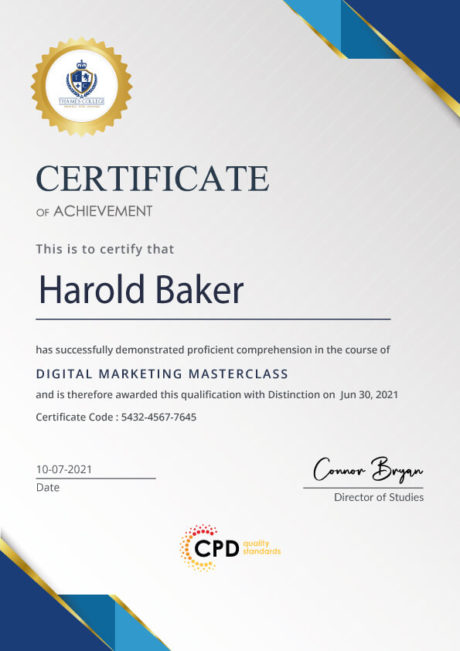Accounting with Intuit QuickBooks 2008

Description:
All kind of businesses require accounting to manage their finance and managing them requires knowledge of cash flow, balance sheet and budgets. As a supervisor having a good accounting skill is very important.
QuickBooks is an accounting program which will remain top notch for novice to expert users. It comes integrated and suitable for variety of industries. It comes with three parts: foundation, intermediate & experts. Here, you will learn all of them, from the beginning to the ending of Intuit QuickBooks.
So, basically this Accounting with Intuit QuickBooks 2008 is designed to give you a complete knowledge on accounting with Intuit QuickBooks. So if are interested to improve your knowledge or want to learn from starting, you should join this course now.
Learning Outcomes:
- Describe the art of finance and key financial terms
- Determine your role in company finances
- Find the rules and regulations for your area and industry
- Discuss various types of financial reports, including income statements, balance sheets, cash flow statements, and statements of retained earnings
- Explain how a chart of accounts is created
- Tell the difference between cash and accrual accounting
- Explain single-entry and double-entry bookkeeping
- Differentiate between debits and credits
- Identify and analyze important financial data and make financial decisions
- Read annual reports
- Determine whether a company is a financially high or low risk
- Recognize different types of organizational financial plans
- Explain what budgets are and how to prepare them
- Recognize what computer skills you need to make you a financial whiz
- Deal with financial situations that impact the people that work for you
- Performing basic transactions through setting up sales tax, opening check register, writing checks and much more
- Enter, view, search and pay bills; along with editing, deleting and voiding a bill
- Utilizing the loan manager by going through the preparation to add loans, viewing payment schedule and other relevant options
- Adding new inventory, checking inventory status, adjusting the quantity on hand and using build assemblies
- Customizing, creating, memorizing purchase orders and navigating through existing ones
- Finishing purchase orders by checking the spelling, using print preview, printing purchase order and using email options
- What to do when receiving inventory with or without bills, entering bills against inventory, backorders and closing purchase orders, and creating inventory worksheet
- Returning items to vendors, applying vendor credits, reimbursing expenses, and using vehicle mileage
- Creating new bank account in order to transfer funds, making non-customer deposits, and managing undeposited funds account
- Creating and funding petty cash, and tracking the expenses
- Understanding credit cards and QuickBooks, setting up credit card as liability account or as a vendor, entering charges, paying credit card, and reconciling them
- Utilizing online banking features by setting up online account in QuickBooks, and using it as a credit card merchant
- Using the report menu, opening report center and understanding it, choosing a category and opening pre-defined reports
- Choosing dates and columns, changing sort order, modifying the header and body for pre-defined reports
- Emailing, printing, exporting and memorizing the report
- Review some common reports such as trial balance, balance sheet, profit & loss and others
- Get report details through QuickZoom feature, accessing memorized reports, setting preferences, and using the learning center
- Performing basic transactions through setting up sales tax, opening check register, writing checks and much more
- Enter, view, search and pay bills; along with editing, deleting and voiding a bill
- Utilizing the loan manager by going through the preparation to add loans, viewing payment schedule and other relevant options
- Adding new inventory, checking inventory status, adjusting the quantity on hand and using build assemblies
- Customizing, creating, memorizing purchase orders and navigating through existing ones
- Finishing purchase orders by checking the spelling, using print preview, printing purchase order and using email options
- What to do when receiving inventory with or without bills, entering bills against inventory, backorders and closing purchase orders, and creating inventory worksheet
- Returning items to vendors, applying vendor credits, reimbursing expenses, and using vehicle mileage
- Creating new bank account in order to transfer funds, making non-customer deposits, and managing undeposited funds account
- Creating and funding petty cash, and tracking the expenses
- Understanding credit cards and QuickBooks, setting up credit card as liability account or as a vendor, entering charges, paying credit card, and reconciling them
- Utilizing online banking features by setting up online account in QuickBooks, and using it as a credit card merchant
- Using the report menu, opening report center and understanding it, choosing a category and opening pre-defined reports
- Choosing dates and columns, changing sort order, modifying the header and body for pre-defined reports
- Emailing, printing, exporting and memorizing the report
- Review some common reports such as trial balance, balance sheet, profit & loss and others
- Get report details through QuickZoom feature, accessing memorized reports, setting preferences, and using the learning center
- Discover more about reports, employee QuickReport, payroll summary by employee, payroll liability report and how to export data to excel
- Track time with weekly timesheets, invoicing unbilled time and much more
- How to back up, restore and create company files, verify, rebuild and clean up data
- Opening the user list to create, edit, delete users, change their passwords and work in a multi-user environment
- Ways to import and export files, synchronize outlook contacts, and converting from another program
- Learn about, create, import, cancel and convert Accountant’s copy
- Understanding Asset accounts, creating an asset account, purchasing and viewing fixed asset, and entering depreciation
- Understanding liability and equity accounts through current term and long term, adding liability accounts, recording investments and payments by and to owners respectively, and repaying liabilities
- Setting sales tax preferences, viewing tax code list, setting tax codes for items and customers, using sales tax reports, adjusting tax due, and remitting sales tax
- Preparing for year-end and tax time, processing payroll forms, paying estimated income taxes, and closing the books
- Opening and closing the Business Planner, understanding the user interface, using the welcome screen and getting help
- Entering company information, income and expense details, and completing the interview
- Understanding the interface, choosing a section, viewing examples, using topic guide and writing out your plan
- Generate reports and graphs, check spellings, and set the plan format
- Finish planning using the print preview, printing business plan and topic guide, and backing up and restoring plans
Assessment:
- At the end of the course, you will be required to sit for an online MCQ test. Your test will be assessed automatically and immediately. You will instantly know whether you have been successful or not.
- Before sitting for your final exam you will have the opportunity to test your proficiency with a mock exam.
Certification:
- After completing and passing the course successfully, you will be able to obtain an Accredited Certificate of Achievement.
- Certificates can be obtained either in hard copy at a cost of £39 or in PDF format at a cost of £24.
Who is this Course for?
Accounting with Intuit QuickBooks 2008 is certified by CPD Qualifications Standards and CiQ. This makes it perfect for anyone trying to learn potential professional skills.
As there is no experience and qualification required for this course, it is available for all students from any academic background.
Requirements
Our Accounting with Intuit QuickBooks 2008 is fully compatible with any kind of device. Whether you are using Windows computer, Mac, smartphones or tablets, you will get the same experience while learning. Besides that, you will be able to access the course with any kind of internet connection from anywhere at any time without any kind of limitation.
Career Path
After completing this course you will be able to build up accurate knowledge and skills with proper confidence to enrich yourself and brighten up your career in the relevant job market.
Course Curriculum
| Module 1 | |||
| Getting the Facts Straight | 00:30:00 | ||
| The Accounting Cycle | 00:30:00 | ||
| The Key Reports | 00:30:00 | ||
| A Review of Financial Terms | 00:30:00 | ||
| Understanding Debits and Credits | 00:15:00 | ||
| Your Financial Analysis Toolbox | 00:30:00 | ||
| Identifying High and Low Risk Companies | 00:30:00 | ||
| The Basics of Budgeting | 00:15:00 | ||
| Working Smarter | 00:10:00 | ||
| Module 2 | |||
| Opening QuickBooks Pro 2008 | 01:00:00 | ||
| Accounting Basics, Part One | 01:00:00 | ||
| Accounting Basics, Part Two | 01:00:00 | ||
| Getting Started with QuickBooks | 01:00:00 | ||
| Getting Help in QuickBooks | 00:30:00 | ||
| Lists, Forms, and Registers | 00:30:00 | ||
| Using the Chart of Accounts | 00:30:00 | ||
| Using the Journal | 00:30:00 | ||
| Adding Items and Services | 01:00:00 | ||
| Adding Vendors | 00:30:00 | ||
| Adding Customers | 00:30:00 | ||
| Adding Employees | 00:30:00 | ||
| Sales Receipts | 00:30:00 | ||
| Customer Payments | 00:30:00 | ||
| Finance Charges | 01:00:00 | ||
| Setting up Invoices | 00:30:00 | ||
| Finishing Invoices | 00:30:00 | ||
| Tracking Invoices | 00:30:00 | ||
| Issuing Credit Memos | 01:00:00 | ||
| Module 3 | |||
| Performing Basic Transactions, Part One | 00:30:00 | ||
| Performing Basic Transactions, Part Two | 00:30:00 | ||
| Paying Bills | 00:30:00 | ||
| The Loan Manager, Part One | 00:30:00 | ||
| The Loan Manager, Part Two | 00:30:00 | ||
| Working with Inventory | 01:00:00 | ||
| Using Purchase Orders | 00:30:00 | ||
| Finishing Purchase Orders | 00:30:00 | ||
| Receiving Inventory | 00:30:00 | ||
| Other Vendor Activities | 00:30:00 | ||
| Getting Started | 00:30:00 | ||
| Petty Cash | 00:30:00 | ||
| Credit Cards | 00:30:00 | ||
| Working with Online Banking | 00:15:00 | ||
| Accessing Reports | 00:15:00 | ||
| Working with Pre-Defined Reports | 00:30:00 | ||
| Finishing the Report | 00:15:00 | ||
| Common Reports | 00:30:00 | ||
| Other Report Tasks | 00:15:00 | ||
| Module 4 | |||
| Payroll Reports | 01:00:00 | ||
| Time Tracking, Part 1 | 01:00:00 | ||
| Time Tracking, Part 2 | 01:00:00 | ||
| Protecting Your Data | 01:00:00 | ||
| Setting up Users | 01:00:00 | ||
| Working with Files | 01:00:00 | ||
| The Accountant’s Copy | 01:00:00 | ||
| Asset Accounts | 01:00:00 | ||
| Liability and Equity Accounts | 01:00:00 | ||
| Preparing Sales Tax | 01:00:00 | ||
| Year-End Activities | 01:00:00 | ||
| Using the Business Planner | 01:00:00 | ||
| Entering Information | 01:00:00 | ||
| Viewing the Plan | 01:00:00 | ||
| Planner Tools | 01:00:00 | ||
| Finishing the Plan | 01:00:00 | ||
| Supplemental Checklists | 01:00:00 | ||
| Mock Exam | |||
| Final Exam | |||
Course Reviews
No Reviews found for this course.










